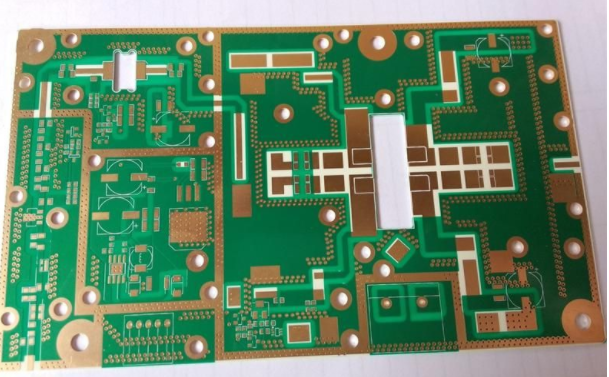Essential common sense for circuit board repair
1. Make a preliminary analysis of the failure
Advocating dare to do it does not mean encouraging brutality. The failure phenomenon is the same, but the cause of the failure is not necessarily the same. If you encounter the same failure phenomenon, it is obviously not wise to always follow the prescription blindly and replace the device blindly. When repairing, if you have a little doubt, you are eager to replace the device, and it may also cause many new faults, which will cause trouble or increase the difficulty of the repair work. In severe cases, a valuable circuit board will be disassembled in a mess, which will be completely scrapped and cannot be recovered.
So what is the correct approach? It should be checked carefully, and the related devices should be carefully measured. For example, a device is found to function abnormally through inspection, but do not immediately assert that the device must be broken, but you need to further check the surrounding devices and wires. Only by comprehensive investigation can we go from seeing the phenomenon to discovering the essence.

The general steps of failure analysis are as follows:
⑴, the failure phenomenon of the circuit board (ask the maintenance personnel).
(2) Preliminary analysis of the possible locations of the fault distribution based on the fault phenomenon.
⑶. Make a simple fault flow chart according to the functional area of the circuit board.
⑷ Check step by step in accordance with the failure flow chart, which is very helpful for accumulating judgment experience.
In addition, after the fault is repaired, all repair procedures must be recorded, and relevant repair materials must be sorted and sorted to guide future repairs.
2. Prepare necessary tools and information materials
⑴. Prepare necessary measuring instruments, such as: maintenance tester, multimeter (digital/pointer type), short-circuit tracker, programmer, EPROM eraser, signal generator, frequency meter, storage oscilloscope, logic analyzer, etc. Prepare the necessary maintenance tools, such as: tweezers,IC puller, wire cutters, diagonal pliers, anti-static gloves, dust-removing ear ball and brush, non-inductive screwdriver, electrostatic pen, electric soldering iron, tin suction device, Hot air gun, constant temperature blowing and soldering station, etc.
⑵, prepare commonly used components, such as: TTL series, COMS series, commonly used memory series, commonly used LSI series, commonly used interface device series, commonly used analog switch series, etc. Also prepare some series of resistors (resistor rows), capacitors, inductors, transistors, etc.
Of course, it is difficult for anyone to prepare so well. Even if they are completely prepared like the above, they may not necessarily be well prepared. This is just a regular list. Many things are only useful under specific circumstances. For example, a short circuit between the power and ground of a complex circuit board. Although it is caused by a certain device, the power and ground of all devices are short-circuited during the test., It is very difficult to check, and it is very simple to have a short-circuit tracker at this time.
⑶. Before overhauling, you should know the damage process of the faulty circuit board and the diagnosis report on the equipment from the service personnel. This is very important for correct and effective judgment of the fault.
If conditions permit, it is best for the maintenance personnel to go to the site to actually look at the fault phenomenon and determine whether the circuit board sent for repair is indeed faulty. That is, confirm whether the circuit board is connected correctly, plugged in firmly, whether the settings are changed, whether the steps of operating the equipment are correct, etc. Many good circuit boards are often misjudged as faults due to the lack of experience of the operator.
⑷. Before maintenance, it is best to know the logic level and logic waveform of each test point of the faulty circuit board in the normal state, at least understand the function and purpose of each main device, and prepare the parameter manual of the relevant device, etc. For reference and analysis at any time.
⑸ Before testing and powering on, it is necessary to find out the power supply type, positive and negative polarity, vulnerable components of the faulty circuit board, and whether there are short circuits, missing parts, etc., and be extra careful during the first power-on test to avoid burning the wrong power supply. Bad board.
3. The same circuit board is of great value for fault repair
It is best for the maintenance personnel to request a good circuit board that is exactly the same as the faulty circuit board or a bad circuit board that is exactly the same as the faulty circuit board.
In the current component-level maintenance, many test instruments have a relatively strong function of comparing good and bad circuit board components. The value of a good circuit board to successful repair is sometimes far greater than the circuit diagram, which can greatly improve the speed of repair and the rate of one-time repair.
The bad PCBA board that is exactly the same as the faulty circuit board is also of great reference value for maintenance. Because the failure points of two bad circuit boards are not necessarily the same, even if the failure points are the same, the degree of damage is not necessarily the same. Therefore, it is often more convenient and easier to repair several identical bad circuit boards at the same time than repairing a single bad circuit board. (Explained by circuit board manufacturer)